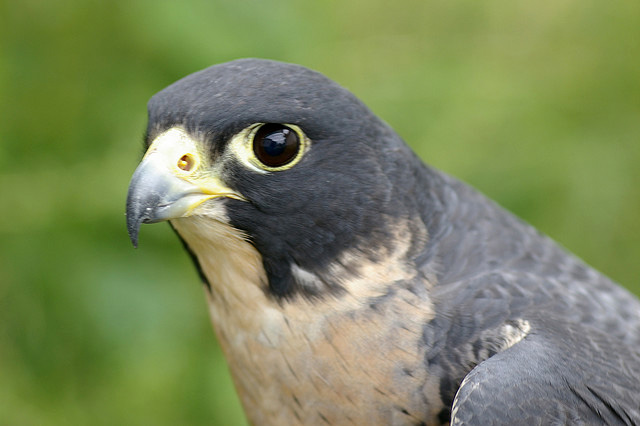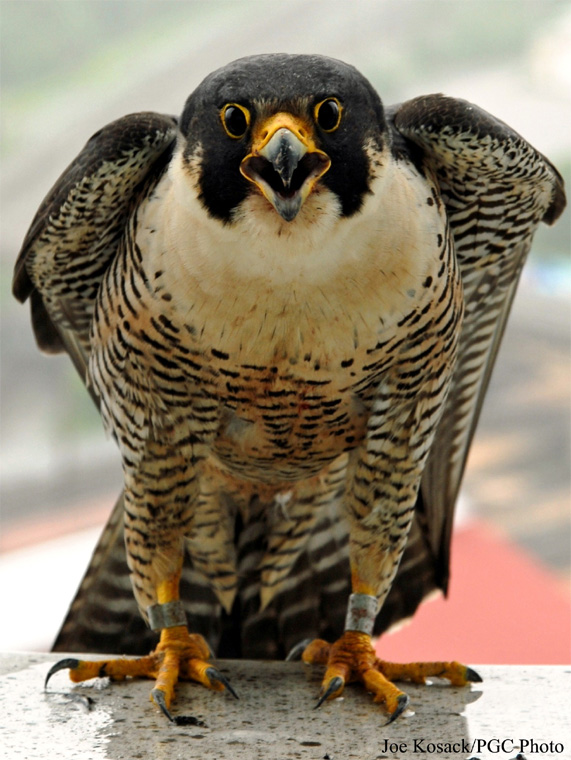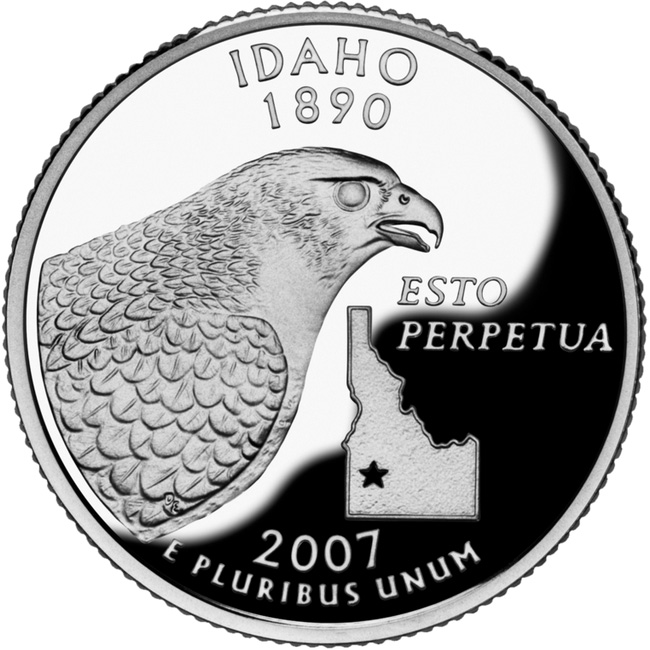Peregrine falcon; photo by Rebecca O'Connor on Flickr (use permitted with attribution).
Official State Raptor of Idaho
The magnificent peregrine falcon was designated the official state raptor of Idaho in 2004 (the mountain bluebird is the official state bird, adopted in 1931). The peregrine falcon is featured on the U.S. Mint's Idaho state quarter. All State Birds
The peregrine falcon (Falco peregrinus) became an endangered species due to the use of pesticides, but populations are recovering since the ban of DDT in the 1970's (supported by extensive protection of nesting places and releases to the wild), and it was removed from the Endangered Species List in 1999. Peregrine falcons are protected under the Migratory Bird Treaty Act.
Peregrine Falcon Facts
The Peregrine Falcon has been called the fastest animal on the planet in its hunting dive (the stoop) - it soars to a great height and then dives steeply at speeds of up to 322 km/h (200 mph), hitting one wing of its prey to disable it and not harm the falcon itself on impact. The peregrine may be killed by other bird predators (large eagles and owls).
The name "peregrine" means "wanderer," and the peregrine falcon has one of the longest migrations of any North American bird. Tundra-nesting falcons winter in South America, and may move 25,000 km (15,500 mi) in a year.
The peregrine falcon reaches sexual maturity at one year and begins breeding at 2 to 3 years of age. The female is larger and more heavily marked. Peregrines mate for life (life span in the wild is up to 15.5 years). The courtship flight includes a mix of aerial acrobatics, precise spirals, and steep dives. The male passes captured prey to the female in mid-air (in order to do this, the female actually flies upside-down to receive the food from the male's talons).
Peregrines feed almost exclusively on medium-sized birds, but they also occasionally hunt small mammals (including bats, rats, voles, hares, mice and squirrels). Peregrine Falcons live mostly along mountain ranges, river valleys, coastlines, and increasingly in cities.
People have trained falcons for hunting for over a thousand years. Efforts to breed the Peregrine in captivity and reestablish populations depleted during the DDT years were greatly assisted by the existence of methods of handling captive falcons developed by falconers.



